#christian lore
Text
Catholics are such closet bottoms.
"submit to God's will-" yeah i see right through you. submit to a more powerful entity because you've been a naughty little sinner, and you need to be punished for your crimes but it's ok because your Dommy Deity will always forgive you, and keep you, and his will is absolute and yours is but a small widdle flower, to be stamped on like a boot to the throat.
hm you aren't fooling me, Catholics.
309 notes
·
View notes
Text
More bible memes
Gonna make some more ars goetia and book of angels later on... though the angels are so hard to find sources on so like, I mayhaps added some headcanons...









Ps. Maalik is from Islamic lore, the angel that punishes people in Jahannam(like um hell).
#angels#abrahamic religions#christian lore#christian memes#Memes#Some apocrypha in there for flavor#Angels#Demons#Angelology#demonology#archangel#archangel michael#angel gabriel#Cammael#Or Chamuel#Ugh i get those confused how many times#archangel raphael#Lucifer cameo ohhhh
63 notes
·
View notes
Text
Status Buff: Palm Ashes
+20 Holy damage as a passive while the mark is on your forehead. Grants advantage against sinners, undead, and pescatarians. Do not overuse at risk of developing blessing-sickness, which can cause nausea, headaches, and a low possibility of an early rapture
#ash wednesday#microfiction#christian lore#the idea that you could just put palm ashes on your forehead at any time for a holy buff is so funny to me
3 notes
·
View notes
Text
ok but like according to christian lore, Mary was born without sin because she was meant to be God's mother, meaning that in God's perfect plan she would have said "yes" to the archangel Gabriel, thus agreeing to carrying Jesus (technically she says something like "here's God's servant, He shall do of me what He wants"). But in christian lore it is also really important that she became God's mother by free choice, she had the possibility to say no but since she had faith she consented to it.
now the question is, assuming she had free will, and assuming she said "no" even if she had faith and was born without the original sin because that was what she was meant to do, would she have remained without sin? would refusing to follow God's plan be the equivalent of the original sin? or would she have "gotten" the original sin as a teenage girl?
#all of this because my period is late and I was considering how as a lesbian (=sinner) I can't possibly be pregnant with jesus#lella rants#Christian Lore#catholic Lore
35 notes
·
View notes
Conversation
Archangel Michael: You remind me of the ocean.
Lucifer: Because I'm deep and mysterious?
Michael: No, because you're full of salt and you scare people.
27 notes
·
View notes
Text
Whumptober Day 8 /Prompt: Outnumbered
It was a gamble, walking around with her halo like this. It was not pleasant like the one Mary wore, golden and lovely. Judas' halo was cruel, and twisted, and disturbing.
When Mary let her halo show, people felt warm and welcome, and they wanted to make her feel that way too. When Judas let her halo show, people felt confused and lonely and afraid, and they wanted to make her feel that way too.
It wasn’t even dark when it happened, which is strange. In movies it’s always dark, and the streetlights are dim, and the sky is clouded and no one else is out. But Judas was waiting in front of the bookstore her friends had just entered, in broad daylight, and around her people were talking and laughing and arguing. There was a group of young men. They didn’t look mean.
There was a group of soldiers once that looked exactly like them. Their eyes were the same. Their whips were the same, stinging harshly on his her back. Her friends say that it never happened, or that it happened to one of them instead, or that it must be all of Jesus’ multitudes encroaching on foreign territory. Judas isn’t so sure though.
She remembers how the tiles of the pavement felt under her knees, how the bruises stayed for weeks. They stayed the longest. They always do, bruises of the self.
She hadn’t paid attention to her surroundings, had thought about what birthday present to buy Judith and other trivial shit like that. She’d fiddled with the handle of the bag.
She’d looked up, and they were there, suddenly, all around her, closing in.
“What the fuck are you looking at?”
“Nothing,”
“What nothing, huh? You’ve been watching us, haven’t you?”
There was a lot of disgust. There was a lot of hate. There was a lot of fear.
“You fucking degenerate,” one of them had said. His da probably beats him, with a face like that, Judas had thought.
“Yeah, filthy fucking parasite, you think you’re so smart, don’t you?”
“I’m sorry, my friends are just waiting for me inside, I think I’ll–“
“Oh no, I think you’ll stay right here with us.”
I’ll tear them apart limb by limb, she had thought, for a moment. I’ll do it.
Or deeper. I’ll shred their memories and rip away everything they know, she had thought, as they had pulled her down.
Or even deeper. I’ll destroy their deepest core. They’ll never feel human again.
And so they had, as good Christians, listened to the sermon and acted as God wanted it. For a glorious moment she had honestly thought they’d go for real destruction.
But they had merely kicked her in the stomach, and in the rips, and kicked her head to the side, and when she had looked up through a fog, it had been an army surrounding her, and she’d smiled through bloody teeth. That had fucked them up the most, probably. Goliaths who’d thought themselves Davids.
The pain she felt was deeper and older than anything they could ever inflict.
Simon and Judith came running somewhere in the whole mess. Judas had sobbed on the ground, or maybe it had been laughter. Judith had knelt down and clutched her head. Simon had put a hand on Judas’ shoulder and screamed.
#whumptober2023#No.8#Outnumbered#Jesus Christ Superstar#christian lore#fic#domestic violence#hate crime#antisemitism#homophobia#blasphemy#these are all more implied but i wanted to be careful#Judas Iscariot#also this is a modern reincarnation au#everything about this is problematic#yes Judas is a woman
3 notes
·
View notes
Text
"Who is like God?"

Been thinking of going back to drawing I made this: Archangel angel Michael.
I mostly took references from Islamic lore where it says:
In Muslim lore Michael’s wings are said to be “the color of green emerald,” and he is covered with “saffron hairs, each of them containing a million faces and mouths and as many tongues which, in a million dialects, implore the pardon of Allah.
As for the Yellow head, it's actually the brightness of his face. Him being a Seraphim and all.
I made a crown for him since he is the chief of all angels, and also because he is the prince of Israel.
The chest plate in his body was due to him being a warrior, but unlike Uriel with her flaming sword, In the book of Enoch he only used his fist while in the famous Renaissance artworks he is seen holding a sword and there are others saying a Lance sooo I decided to only give him the shield plate on his chest as to demonstrate he is a protector instead of just full on warrior.
For the clouds it represent heaven as well as his association with the rain.
#angels#angelology#islamic lore#christian lore#michael#archangel#angel michael#mikhail#demonology#drawing#doodle#archangel michael
8 notes
·
View notes
Text
Cold winter: Los Reyes Magos
LOS REYES MAGOS
Category: Spanish folklore / Christmas season / Biblical lore
In Spain, children don’t wait eagerly for Christmas. Christmas is a big holiday for adults, not for them! They don’t get any presents on Christmas… No, they only get presents during the other big holiday of the winter season. Not Christmas, not New Year… But the Epiphany, also known as “El dia de los Reyes” (The day of the Kings). And they don’t get their presents from any Santa or Saint Nicholas – but from Los Reyes Magos, The King-Magi – or those that the English like to call “The Three Wise Men”.
Everybody knows the story… After the birth of Jesus in Bethlehem, three “wise men” (not actually but more about that later) came from the east to Judea, and asked king Herod to see the child that had been born “king of the Jews”, explaining that they knew he was here for they followed his “star” in the night sky, and came to pay homage. King Herod, who had tried to kill baby Jesus before, then sent the three wise men to search the baby on their own, but told them to come return to him afterward so he could too “pay homage” to the “king of the Jews”. Following the rising star, the three wise men finally found where baby Jesus was – and they all kneeled before him and his family, offering three gifts: gold, frankincense and myrrh. But a dream warned them not to return to Herod or inform him about the child’s location, so after they paid their homage they “returned to their country by another path”.
In Spain, the Epiphany is a grand celebration of the Magi : they are the ones supposed to bring gifts to children on the night of the Epiphany (and the children notably have to send letters to the three Kings to explain their desires, just like with Santa). Each Epiphany Day great and colorful parades are organized throughout the town (called the cabalgatas de los reyes mmagos or cavalcades of the Magi), welcoming the three Kings as they throw candies and goodies at the audience: Melchior from Europe (or Arabia depending on the tradition), Gaspar from Asia, and Balthazar from Africa. Coming from the East while riding camels, they then proceed during the night (or the eve’s night) to visit each household, leaving gifts for the children in their polished shoes. In exchange, the children leave some food and drinks for both the Kings and their camels – sweet wine, fruits, milk, dried grass and hay… If the child was good, they will receive a gift – but if the child was bad, they will receive coal (though, just like with the Befana’s tradition, the coal was promptly replaced by a form of black candy called “sweet coal”). There is also a specific cake for the Epiphany, called the “Roscon de Reyes” (accents not included), a brioche-like cake with orange blossom water for the taste. It is in the shape of a circle, to mimic a crown, and has as “jewels” candied or crystalized fruits. Usually filled with cream (though some are “plain” without filling, while others prefer chocolate cream or whipped cream), it also contains a small figurine shaped like one of the Reyes Magos, and dried bean. Whoever gets the slice with the figurine is crowned the “king” or “queen” for the day, and is ensured to have good luck for the year ; however the one that gets the bean will have to pay for the cake.
I want to return on what I said before… the fact that the three Kings come from three different continents. It is a tradition that exists outside of Spain, and for quite a long time. In fact it was a tradition started by medieval art, and then reused by Renaissance art heavily – before being picked up by folk traditions such as the Epiphany holidays. This tradition insists on having the three Magi correspond to the three parts of the world (as they were known in the Middle-Ages, and before the discovery of America, “the fourth continent”). Hence the separation above and the idea that the Three Kings were white, oriental and black – to represent how the powerful kings of the entire world came kneeling down in front of Jesus. But this tradition tends to overlap with another one… another habit that rather has the three Kings represent the three ages of men, one being old, the other middle-age, and the last young. Sometimes the two depictions are separate, other times they overlap – and the last case is fascinating because the choice of superposition is not innocent. In this overlap, Melchior the European will be depicted as an old man, because in medieval (and Renaissance) ideas, Europe was the “old civilization” and the “father” of all things. Meanwhile, Balthazar of Africa will be depicted as a young man, because in medieval and Renaissance mindsets Africa was a “child” continent with barely any civilization (and if you told them Africa had a much older history than Europe they would have laughed in your face). Gaspar the Asian is usually the middle-aged one.
But this tradition of the “symbolism of three” actually comes from art and folk traditions – I want to insist on this. It is not a religious tradition, because for religious authorities and the “actual” Christian culture (pushing aside all local traditions), the three wise men don’t come from just anywhere in the world. They come from the East, the text is pretty clear.
But before that, let’s take a look at the actual title of these guys… People call them the “three wise men”. Wrong translation. Or an oversimplified one. People call them the “Three Kings” and the “Three Magi”, and this is half-right, because they are “king-magi”. The “king” part is pretty obvious, but the “Magi” part might be more obscure to people today. “magi” is the plural of “magus” which, yes, is the origin of “mage” and with time came to mean “sorcerer” (the New Testament several times use the term “magi” to designate sorcerer and male witches, like Simon the Mage or Elymas). But here, “magus” has to be understood in its original sense: the Greek transliteration of the Old Persian “magus”, which is actually a term designating the priesthood of Zoroastrianism. The Zoroastrian priests were most notably renowned as astronomers, because their study and religious practices demanded that they knew and observed the starts and the constellations (hence the whole “we followed a star to find the babe”). And, due to being both priests and astronomers, the “magi” came to be seen and perceived as men dabbling in the “occult” or men of many high and intellectual crafts – hence the evolution into “wise men” and “sorcerers”, and how from “priesthood-rulership” the “three magi kings” turned into “knowledgeable kings dabbling into astronomy”. That, coupled with them “coming from the East”, came to people identifying them as kings from the Parthian Empire, which stretches from Syria to India, and had Zoroastrianism as a dominant religion.
The most well-known and agreed “origins” of the three “scholar-kings” in religious traditions has a given set of countries: Persia for Melchior; India for Caspar (or Gaspar or Jaspar), Arabia for Balthasar (or Balthazar), though he is sometimes rather given Ethiopia as a kingdom. But there is another one, which overlaps with the “three ages of man” depictions, that rather claims that Caspar was the old one and “king of Tarsus” (a land on the southern coasts of today’s Turkey), Melchior was the middle-aged ruler of Arabia, and Balthazar the young man coming from Saba (today’s northern Yemen).
Similarly, which magus gave which gift to baby Jesus is a big subject of debates – but everyone agrees on the fact that there were three gifts. Gold, frankincense and myrrh. The meaning of these gifts has also been heavily debated. Some people invoke that, very simply, it just are very valuable, very rare gifts, precious enough to be worthy of a king – myrrh being a precious body oil, frankincense a type of perfume, and gold being gold. These people hold that the gifts should merely be interpreted as “gifts for a newborn king”. But another group rather wants to see in those gifts three symbols reflecting Jesus’ life, and his nature as the Christ. Indeed, “gold” would mean a form of material power and wealth, and reflect an earthly kingship, while frankincense (which is used as incense) would reflect a type of worship and prayers, and mean a divine nature (as Jesus is the “son of god”). As for the myrrh… it was used as an embalming oil, and would represent death – either the mortal nature of this son of God, or his foretold death at the cross, a crucifixion needed to redeem all of humanity. This is notably associated with a famous sentence “Gold, as to a king ; myrrh, as to one who was mortal ; and incense, as to a God”. (A “softer” interpretation in this sense rather invokes gold as symbolizing a great, pure virtue ; frankincense as representing a strong faith and solid prayers, while myrrh is here to symbolize the suffering of a mortal life).
- - - - - -
Unfortunately, in modern urban areas of Spain, the tradition of the Reyes Magos as gift-givers tends to be replaced by the much more well-known and widespread Santa Claus.
But I want to add one thing about the “Magi-Kings”. I talked about the folkloric and artistic tradition. I talked about the religious tradition. However, what about the original text? It is fascinating to look at the actual text that speaks of them, only one of the four Gospels, Matthew’s Gospel. Because… well most of what we “know” or believe about this trio isn’t in there.
For example yes, the three wise men come from the east… But the text never specifies that they were three. This idea came from the fact the magi came bearing three gifts – but nowhere in the text are they said to be three. (In fact early traditions and depictions spoke of two, four of five magi). Similarly, the names “Gaspar, Balthazar and Melchior” aren’t in the New Testament. They were “found” or “invented” later, in posterior texts. In fact some local churches give them different names: the Ethiopian Church, one of the oldest branches of Christianity in the world, calls them “Hor”, “Karsudan” and “Basanater”. And let’s tackle another myth: “reyes” magos ; “rois” mages ; “king” magi… The text never specifies that they were kings. The text only speaks of “magi”. Nowhere are they king. So where does it comes from? Well, this idea comes from the Old Testament, not the New, where a prophecy/vision describes the future upcoming Messiah (identified by Christians as Jesus) as being worshipped by kings upon his birth… Which the Christians promptly related to the scene of the “Adoration of the Magi”, when the magi kneeled in front of young Jesus bearing their gifts. And so bam! From just astrologer-priests, they became kings!
#cold winter#the three wise men#epiphany#los reyes magos#the three magi#the three kings#christian lore
4 notes
·
View notes
Text


Some AHOS things, a few of which became canon :)
First pic is an idea for a plot point that could or couldn’t fall through, not sure yet. For that reason I won’t comment on it ;)
Second pic is an early design page for different types of angels (and you can see that this is where the new Mrithun idea came from). I won’t do lore time just yet, as I have a much better set of pictures for all the types of angels in AHOS, but I’ll give a very quick rundown.
In Christian lore, there are nine types of angels, named Choirs, all grouped into three Triads. The First Triad is closest to God, and those angels look as inhuman as can be—this is where you get those “biblically accurate” angel memes (news flash: they’re all biblically accurate, you’re just looking at a specific Triad). The Second Triad is in the middle of God and humans, and they are slightly more recognizable, but still vastly different from people. The Third Triad is closest to humans, where you get those “virgin” angel memes. They look most like us, with some key differences. (I didn’t actually draw the Third Triad in that pic whoops.
#my art#old art#ahos#a house of sins#Christianity#Christian lore#seraph#seraphim#cherub#cherubim#throne#dominion#virtue#power#principality#archangel#angel#biblical angel#biblically accurate angel#ophan#ophanim
4 notes
·
View notes
Text
If everything is God's plan and he creates everyone, then it was always his intention for satan to fall and become the ruler of hell
0 notes
Text

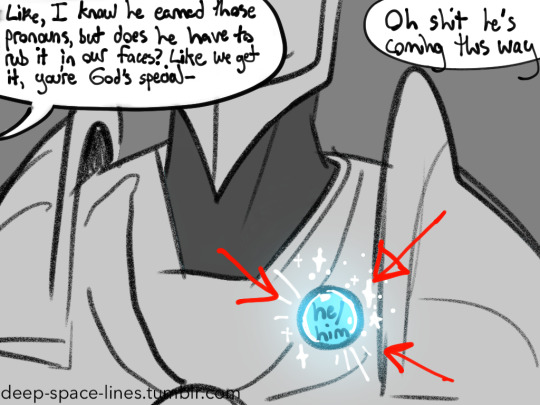
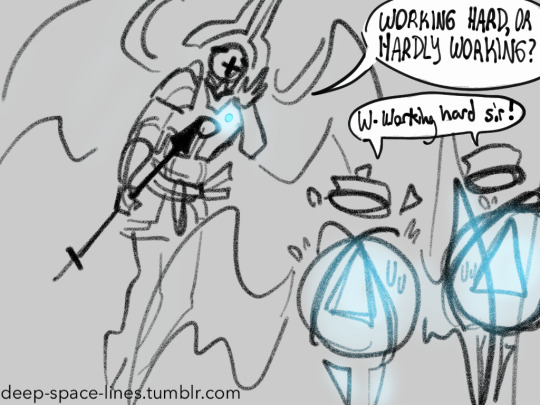
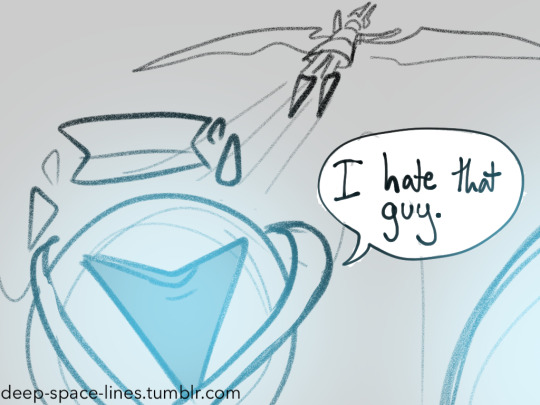
I know Gabriel is canonically really popular with Heaven’s residents but there’s bound to be some heavenly loser with pronoun envy
#my art#ultrakill#gabriel ultrakill#i love angel pronoun lore#he earned those pronouns fair and square and now he gets to wear a he/him pin like the badges on military uniforms#of course he has blue wings and pronouns#also can you fuckin imagine being a virtue??#imagine you live your entire life as a Good Christian(tm) and then u get to heaven and find out not only do u still have to work a 9 to 5#you have to do it in hell#forever#man i’d be salty too#straka's shitposts#sketches
4K notes
·
View notes
Text
46 notes
·
View notes
Text
Angel & Demon Headcanons.
Lucifer was once the angel of Love, bc while all other angels have a lot of responsibilities, none of the angels have been given the title of "Angel of love" Instead there is God who delivers love and is love... which actually would make the theory that "Lucifer was once the angel of Love" make more sense because he was the closest one to perfection, that being God, and no other love can compare to that of God. So no other love could compare to the Love of God, not even the angel said to be so. Yes I know Hanael/Anael is considered as the star of love, but that's actually in the Longfellow's work The Golden Legend. And while there is Mihr considered as an angel of friendship and love, he will be placed in Persian Lore.
-
ADDING ON onto the theory that Lucifer was once the angel of Love, it could also be used to explain Raphael's association with love too. At the beginning Lucifer was one of the chief angels, or at least powerful since he managed to instigate a third of the angels to fall, and after his fall there probably needed to be another angel that substituted his title and rank, which is why despite Rephael being considered as mostly a healer, he is also sometimes associated with other things like love and science.
—
For Raphael, I can't help but consider him as this geeky kind of angel that loves invetning things and screwing with the creation of physics, he is the sole reason why you need letters in math, he was probably present during the double slit experiment and thought "You know what would be a fun way to make >:)))"
—
On the other hand I think Raphael also loves his title as an(other) angel of Love. Considering his enemy is also the demon of lust Asmodeus, they are likely in a constant battle between whenever or not having kinks is good or bad.
—
Asmodeus is a yandere.
—
Lucifer(fallen Satan) has not only daddy issues but also mommy issues. Although it would be cool to see Mary trying to handle Lucifer on his own, seeing that she is the most purest being, just like Eve once was. Flashbacks to that tree in the garden?
—
The personality of Azrael is either this happy go lucky kind of guide trying to help people accept death as much as they can until they reach the gates, or this tired and cold like angel whom for some reason is like a calm wave that will not try to elevate nor demoralize your mood, only walk with you as you begin to accept death.
—
Either way one definite trait that Azrael will seem to have is this aura of calming down others, letting your soul get over all the fears of life and send you into a waking slumber, the one you needed ever since you where born into the world.
-
There is this double duality which I really like about demons and angels that doesn't get talked about a lot. That regarding the more ancient books or the Old Testament, Angels and Demons aren't always just always doing good or bad things. Angels, at least in the book of Tobias and wth Abraham's visit by the angels can be seen to lie or misguide the people to think they are humans. In the book of Job they can even go against God's choices saying that those humans[Job] aren't what god thinks. If we include the Apocrypha then Enoch is an easy reference that they can be tempted or that even the Lord does not trust them.
Another temptation that is also shown is with Harut and Marut, two angels that decided to reveal the name of God back at their wives and get punished because of that. Meanwhile there are demons like Asmodeus who recite verses from the book of Moses in the Testament of Solomon, and even follow it to an extent, they can pass through heaven and earth, they can even love and come to regret, as the nephilim and watchers[fallen angels] have come to ask Enoch to help them, as seen during the fight of the watchers when God tells his angels to supress the watchers and see just how their beloved children will get killed in front of their eyes. Freaking twisted i know.
There are also the Ginns, mostly seen and made like evil entities, though they can also be good. Anyways it shows that there is no single duality for them, in the end the angels, despite doing bad things for god, they do it for god who is good, meanwhile as much as demons try to do good things, they will always be making bad things, and it isnt because they reject god, thats partly the case, its that their intentions will always be bad no matter the actions they make.
—
I absolutely love the idea that the Divine Comedy did— no, not that— I mean the concept of God taking care of Eden waiting for humans to come back one day. I'm crying, and taking this as headcanon. Imma just...
#angels#demons#angeology#demonology#christian religion#azrael#angel lore#angel of love#lucifer#satan#raphael#apocryphal#christian lore
29 notes
·
View notes
Text
One of my bosses likes to randomly throw out religious folklore..
Today I was buying a dragon stuffie for my niece and he decided to go into the Bible lore of dragons
I responded with the lore that the elves and fae were the first children of Eve who she had not washed and tried to hide them from God and he turned them invisible and they and their generations after took to the trees and hills cursed to be “ The Hidden Ones”.
He was shooketh. He changed the subject to beetles that shoot chemicals like fire.
I love lore.
#christian witch#witch#witchcraft#pagan#wicca#christian witchcraft#wiccan#paganism#christianity#fae#fairy#elves#elf#witchblr#lore
1K notes
·
View notes
Text
Hey random question for anyone who actually knows Christian lore here. Did Jesus like. Do anything after he rose? I feel like you hear about things he did Before and then that he died and came back but like what happened to him After? when did he die for reals this time? Or did all the walking on water, turn water into wine happen post crucifixion?
654 notes
·
View notes
Photo


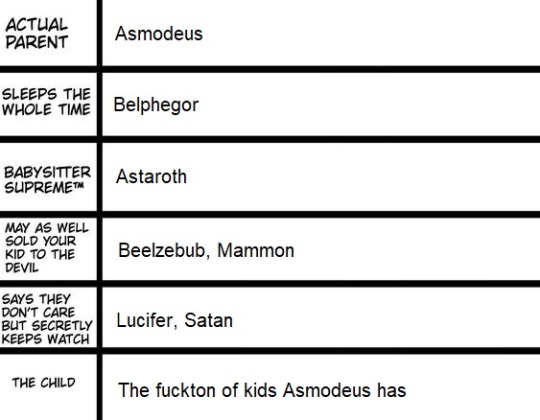

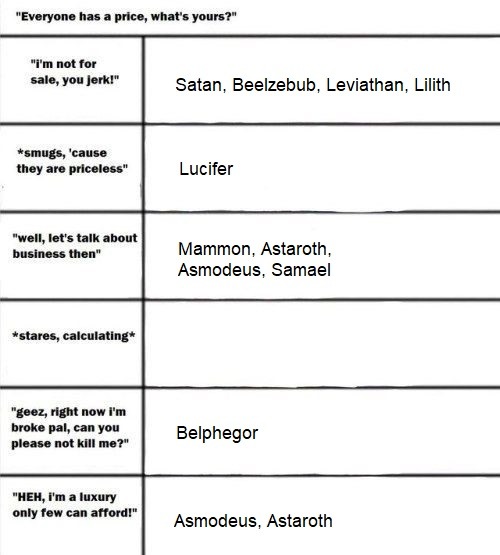
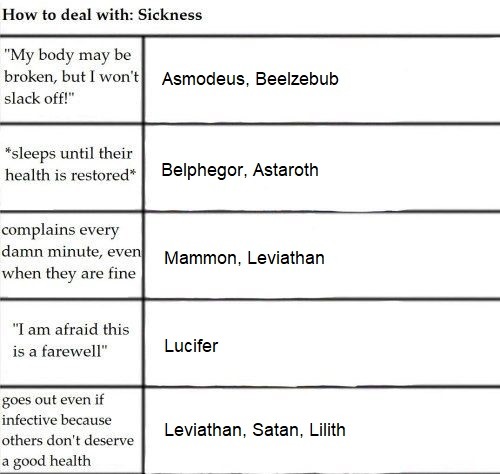
I’m at my bullshit again
#christian lore#lucifer#satan#Beelzebub#asmodeus#astaroth#leviathan#belphegor#mammon#lilith#samael#character alignment charts
31 notes
·
View notes